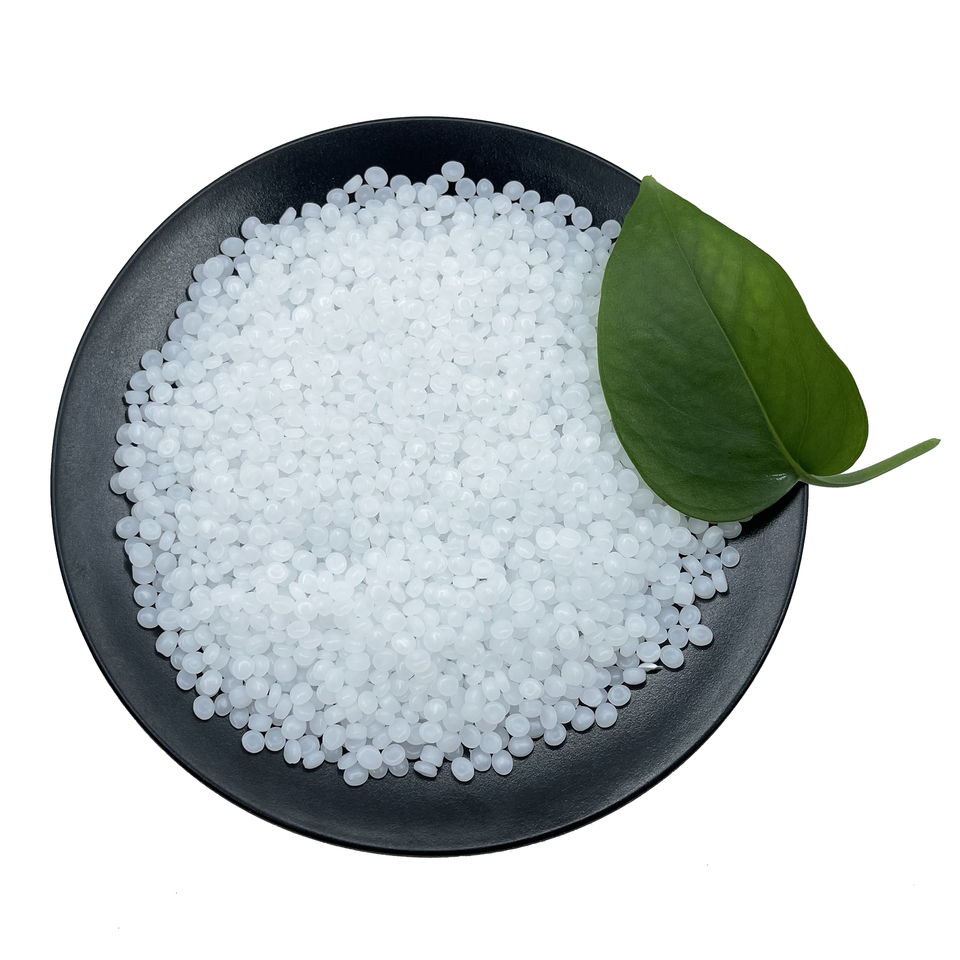
# We sell plastic raw material # Modified Polypropylene
Product Description
In recent years, new varieties of polypropylene with more unique properties have been introduced, such as transparent polypropylene and high melt strength polypropylene, either through improvements in the polymerization reaction or measures taken in post-polymerization granulation.
High Melt Strength Polypropylene

High melt strength polypropylene
One of the disadvantages of polypropylene is its low melt strength and poor resistance to melt droop. Usually amorphous polymers (e.g. ABS, PS) have a rubber-like elastic behavior over a wide temperature range, while polypropylene, which is in a semi-crystalline state, does not. The softening point and melting point are very close to each other and once the melting point is reached, the melt viscosity drops sharply and the melt strength drops dramatically, resulting in uneven wall thicknesses and collapsed bubble holes during thermoforming, which greatly limits the use of polypropylene in certain applications. High melt strength polypropylene (HMSPP) is a polypropylene whose melt strength is less sensitive to temperature and melt flow rate, and is highly promising for development and application.
HMSPP is a polypropylene whose resin contains long branched chains, which are triggered to graft in post-polymerization. The melt strength of this homopolymer is nine times higher than that of ordinary polypropylene homopolymer with similar flow properties, and the yield strength, flexural modulus, and heat deflection temperature and melting point of HMSPP are higher than those of ordinary polypropylene with similar density and melt flow rate, but the notched impact strength is lower than that of ordinary polypropylene.
Another feature of HMSPP is its high crystallization temperature and short crystallization time, which allows thermoformed parts to be demolded at higher temperatures to shorten the molding cycle, allowing for larger stretch ratio, thin-walled containers to be made on common thermoforming equipment.
HMSPP shows an obvious strain-hardening behavior at a constant strain rate, where the stress of melt flow starts to show a gradual increase and then increases exponentially. The strain-hardening ability of HMSPP ensures that it maintains uniform deformation during molding and stretching, while ordinary PP is always deformed from the weakest or hottest part of the structure when it is stretched, resulting in various defects and even failure to mold the product.
At present, there are two main methods for the preparation of HMSPP: one is the reactive Modified Polypropylene with other compounds, and the other is the co-blending modification of polypropylene with other polymers, which are mainly implemented by radiation, reactive extrusion, and initiation of grafting during polymerization. In the preparation of HMSPP, two major challenges are faced: degradation and gelation of polypropylene, along with competition between polymer grafting and monomer homopolymerization, and competition between β-bond breaking and cross-linking and branching of polymer backbones. The main factor affecting the melt strength of polymers is their molecular structure. In the case of polypropylene, the relative molecular mass and its distribution and the presence of a branched structure determine its melt strength. Generally, the larger the relative molecular mass and the wider the relative molecular mass distribution, the greater the melt strength, and long branched chains can significantly improve the melt strength of grafted polypropylene.
HMSPP special resin solves the problem of ordinary polypropylene thermoforming difficulties, can be formed on ordinary thermoforming equipment to form a large stretch ratio of thin-walled containers, a wide range of processing temperature, easy to grasp the process, the container wall thickness uniform. It can be used to make microwave food containers and high-temperature steam sterilization containers. Ordinary polypropylene mixed with HMSPP has a higher processing temperature and processing speed than pure ordinary polypropylene, and the transparency of the film is also better than ordinary polypropylene. This is mainly due to the tensile strain hardening characteristics of HMSPP and its long branched chains which have the effect of refining the nuclei.
The strain-hardening behavior of HMSPP is a key factor in achieving high tensile ratios and fast coating speeds. High coating speed and thin coating thickness can be obtained with HMSPP. HMSPP has high melt strength and tensile viscosity, which increases with shear stress and time. strain-hardening behavior promotes stable growth of bubble pores and inhibits the destruction of micro-pore walls, opening up the possibility of extruded foaming of polypropylene.
Although research on high melt strength polypropylene began in the late 1980s, it has gained worldwide recognition for its excellent performance, reasonable price advantages and wide range of applications, and has gradually replaced the traditional PS and ABS to the trend of engineering plastics, and its development and utilization has broad prospects.
Polypropylene is one of the most important general-purpose plastics and is the fastest growing in terms of both absolute quantity and breadth and depth of application. As a modified plastics industry, cost-effective, multi-functional and engineering polypropylene is always an important task in front of us.
If you need other plastic&rubber raw material, please transfer to our Product Page and find it!
Hot Tags: modified polypropylene, China modified polypropylene manufacturers, suppliers, factory, pom raw material, pp 5 plastic reusable, Polypropylene Homopolymer Injection, poly bag raw material, raw material to make plastic, pet bottle raw material


















